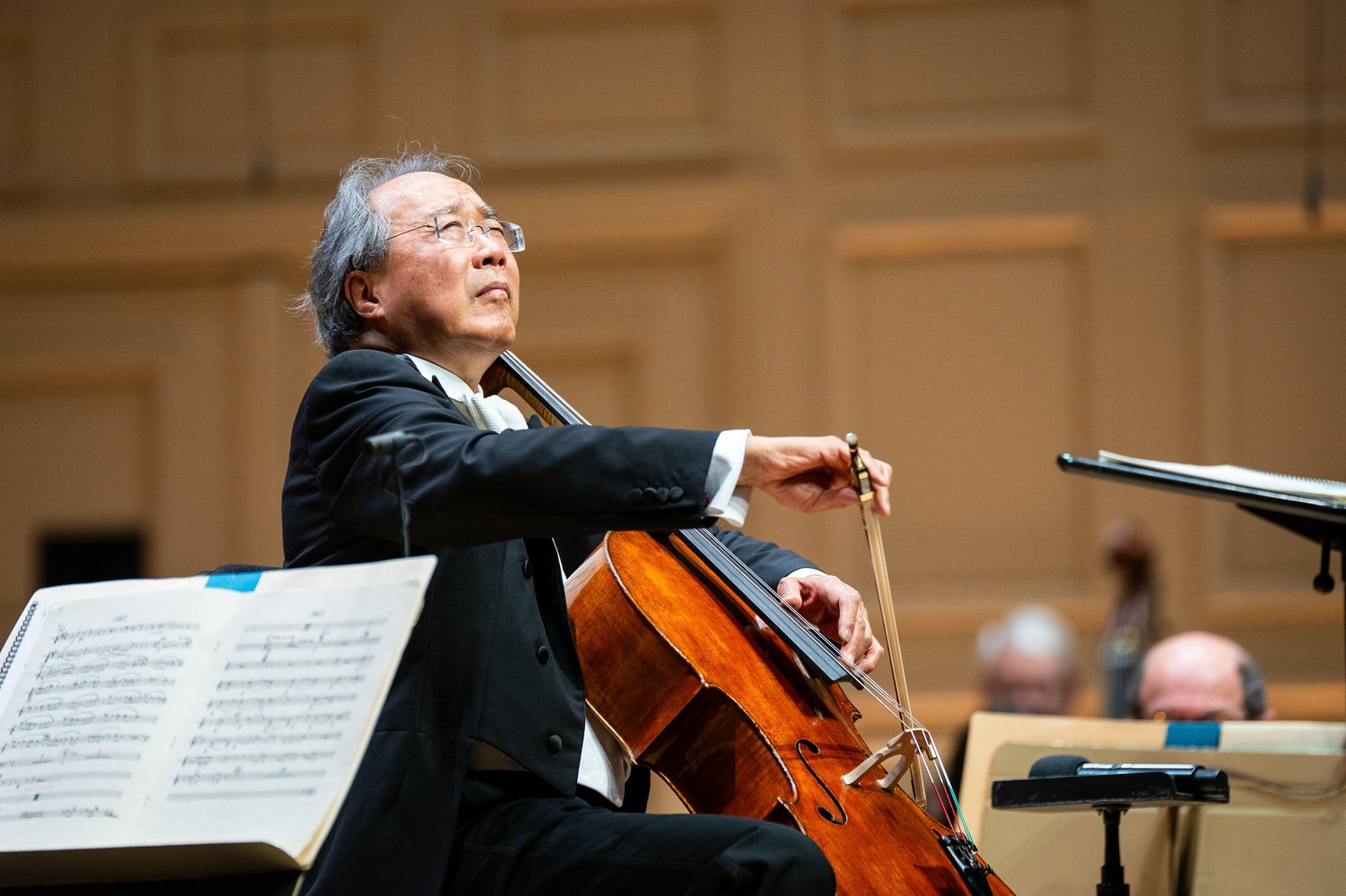
News
Summers Will Not Finish Semester of Teaching as Harvard Investigates Epstein Ties

News
Harvard College Students Report Favoring Divestment from Israel in HUA Survey

News
‘He Should Resign’: Harvard Undergrads Take Hard Line Against Summers Over Epstein Scandal

News
Harvard To Launch New Investigation Into Epstein’s Ties to Summers, Other University Affiliates

News
Harvard Students To Vote on Divestment From Israel in Inaugural HUA Election Survey
An Artistic Dedication to Loss: Yo-Yo Ma and the BSO Shake Symphony Hall

On April 11 at Boston’s Symphony Hall, the Boston Symphony Orchestra’s second concert of the “Decoding Shostakovich” series opened with a simple, devastating dedication.
“To anyone who has experienced loss — loss of health, of loved ones, and, above all, loss of dignity,” Yo-Yo Ma said.
These words, delivered by the guest artist and famous cellist, set the tone for an evening that invited the audience to the act of listening and bearing witness to a historical and emotional reckoning. The series marks the 50th anniversary of Dimitri Shostakovich’s death and coincides with the release of a 19-disc box set of the composer’s major works recorded by the BSO and their music director Andris Nelsons.
Shostakovich’s “Cello Concerto No.1 in E-flat Major, Op. 107” opened the evening, with Ma taking on the work originally written for Shostakovich’s close friend and collaborator Mstislav Rostropovich. From the first movement, the sound of the music marched in like a military parade — tight, ominous, and with an undercurrent of sardonic humor. The orchestra’s strings and horn, played by featured lone horn Michael Winter as a duo to the cello, provided a cold omniscience. Ma countered with defiant repetition, each note scratching against the surface of control.
The second movement offered contrast as it descended into an elegiac trance. Ma’s mood became reflective, his eyes squinting toward an unseen point in the distance. In this elegy of sound, grief was heavily pronounced, yet a fragile peace remained beneath it. His entrance into the cadenza — an enraptured soliloquy — was utterly transcendent. Fragmented quotations emerged, echoing Beethoven’s Fifth Symphony, Shostakovich’s own Tenth Symphony and film score to “The Young Guard,” and even Stalin’s favorite Georgian folk tune “Suliko,” building a haunting collage of history, irony, and memory.
The final movement burst forward with urgency as strings and percussion tangled and surged toward a frantic climax. Ma returned with an encore that shifted the mood and deepened the evening’s message. He played a soulful, jazz-inflected rendition of the Yiddish folk tune “Moyshele,” arranged by BSO principal cellist Blaise Déjardin. Inspired by the French group Les Yeux Noirs and played with the cello section, the tune’s theme of wandering and resilience coincided with the beginning of Passover and Shostakovich’s long-standing affinity for Jewish folk music.
After the intermission, Nelsons led the orchestra through Shostakovich’s “Symphony No. 11 in G minor, Op. 103,” subtitled “The Year 1905.” Composed in 1957 and awarded the Lenin Prize in 1958, the symphony remembers the Russian Revolution of 1905, specifically the “Bloody Sunday” massacre in St. Petersburg. However, many believe that it alludes to the Soviet suppression of the 1956 Hungarian uprising. As with so much of Shostakovich’s work, the surface and subtext live in uneasy tension.
Nelsons shaped the symphony with cinematic precision and depth. The symphony’s opening movement, “Palace Square,” began with ominous stillness — slow, fog-like, and shadowed. Horn calls pierced the air with gloom, ominous as if history itself were stirring. The second movement, “The Ninth of January,” erupted in thunderous contrast: The fortissimo brass and percussion mimicked the suddenness of gunfire and riot. Yet Shostakovich left space for silence, too, in soft, fragile strings that spoke of the brokenness.
The third movement, “In Memoriam,” featured beautifully restrained playing from the cello section, their plucked strings evoking the sound of distant footsteps. The tension built again in the final movement, “The Tocsin,” through quoted folk melodies, relentless percussion, and the sound of tolling bells that surged into a climax which was both heroic and terrifying. The climatic drumbeats landed with physical weight, like blows to the heart.
As the concert series’ title suggests, “Decoding Shostakovich” demands more than passive listening. These works are riddles originally shielded by iron and composed under duress, seeking to penetrate the listener's consciousness and ask whether the composer was actually commemorating the 1917 Revolution.
The BSO, under Nelsons’ fluid and expressive direction, invited the audience into the ambiguity of music — the wordless expression that is direct and elusive at the same time. In Yo-Yo Ma’s soulful performance, with his deep connection to the music and to the human stories it tells, the entire evening of music spoke to loss, dignity, and — perhaps — hope.
—Staff writer Dailan Xu can be reached at dailan.xu@thecrimson.com. Follow her on X @Dailansusie.
Want to keep up with breaking news? Subscribe to our email newsletter.
